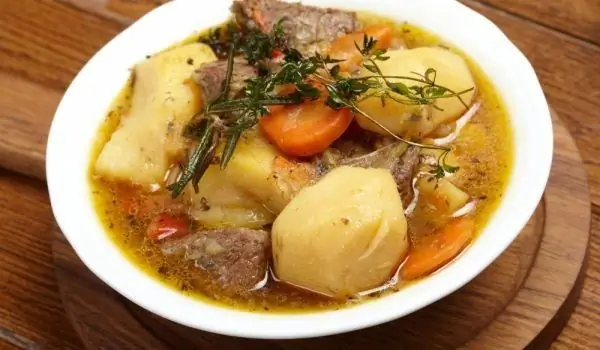2025 Author: Jasmine Walkman | [email protected]. Last modified: 2025-01-23 10:18
People have learned to preserve food from time immemorial. There are various theories as to who invented canning. According to some, this is the French chef Francois Apert, who found that a well-sealed hot food can last much longer without spoiling.
This happened in the early 19th century and the Frenchman even received a prize of 12,000 francs for his invention. However, according to many, canning was discovered by the Dutch five centuries earlier.
In the 1970s, canned 70-year-old cans were found in the Arctic Ocean by the team of the First Russian Polar Expedition led by Edward Toll. They were perfectly edible.
Today, the debate over who invented the technology of canning continues, but whoever this person was, he definitely made a truly amazing discovery.
There are few households in Bulgaria, especially in the villages, where countless jars in the form of compotes, jams, marmalades or even meat are not prepared. Canning is not a difficult process as long as some basic rules are followed during their preparation.
The most common is canning by sterilization. In this way, fruits, vegetables, meat and fish can be enclosed in jars.
In this way of processing are distinguished natural canned food (tomatoes, peppers, green beans, etc.), canned food in which the products have previously undergone culinary processing (casserole) and fruit compotes.

Ready-made jars are hermetically sealed products that are fit for consumption over a long period of time.
The most important rules to follow when canning are to use very healthy and fresh products, clean utensils during cooking, to wash your hands and to use new jar caps to make sure that will close well.
The sterilization time depends on the products you are going to close. If you close the fruit, it is good to remove the stone in advance and wash them. The fruit is poured into the jar, the amount of which depends on whether you will use only the juice or you will also consume the fruit.
It is good that at least half of the jar is full of fruit. Sugar is added, as for more sour fruits, such as cherries, the sugar should be at least 5 tablespoons.
Finally, pour the water to the edge of the jar and put the cap. For compotes of cherries, cherries, apricots, strawberries and peaches 15 minutes are enough for canning, counting the time from the start of boiling.
For pears, apples and grapes the duration is about 20-25 minutes, and for harder fruits such as quinces it takes about 30 minutes.
Recommended:
How Long Do Jars Of Winter Food Cook?

Different types of vegetables and fruits need different times to be canned. What is most important for canning? You need time. Although it sounds easy, if you want to make enough winter food, it will probably take you at least a day. Another thing you need to do before you start canning any products - look at the recipe to make sure you have bought and have everything you need.
Can We Preserve Pots In Jars

Canning food is useful and undoubtedly much more profitable than buying everything from stores. We know how to preserve raw fruits and vegetables, fish, but since raw products can be put in jars, it is logical to ask the question - can we preserve already cooked dishes?
Rules For Sterilization Of Jars

The autumn season is best for canning and is generally a peak in the placement of fruits and vegetables in jars and basements. But to cope with this task, we need to know what is the best way to make it happen and what we need. Before we start canning jars with winter food, we must have sterilized them.
Jars With Winter Food - Invented By A French Chef

In the season of cans and jars of winter food, we thought about where everything started, related to the closing of our favorite jars for the winter. One of the classics in the Bulgarian reality in the cold evenings is to open a home-made jar with pickled peppers, pickles or lyutenitsa.
Tips For Canning Meat In Jars

Until recently, most Bulgarians living in the villages kept all kinds of animals. Although this has changed today, mainly because there is no such benefit in taking careless and investing a lot of money in this activity, it is always good to know how to preserve meat in jars.

